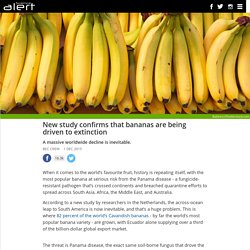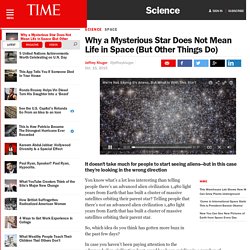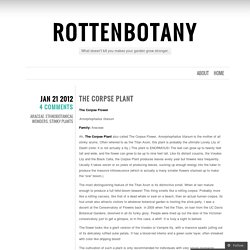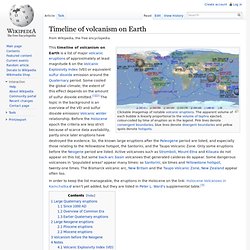

"Gaslighting": One of the Most Dangerous Forms of Mental Manipulation We All Deal With. The universe can be a funny place sometimes.

I’ve been doing a lot of research about a form of mental abuse that a lot of us are not only susceptible to, but actually deal with every single day. It is one of those things that we don’t even realize is happening to us, we just see the results: self-doubt, diminished self-esteem, and reduced self-worth. The world has a way of beating even the best of us down from time to time but this specific form of manipulation is one that can be identified and removed from our day-to-day existence.Buy an “Intelligence is sexy” t-shirt!
Planted Seeds of Doubt Back in 1938, there was a play called “Gas Light” that was later adapted into a movie in 1944. Our Perception is Our Reality. Theconversation. The Labor party took everyone by surprise over the weekend when it announced it would limit negative gearing to new housing and reduce the capital gains tax discount to 25%.

Theconversation. Other than renting, the most common way to get a roof over your head is to buy a home and live in it.

Another way is to buy a home and rent it out, and then rent a similar home (buy, rent, rent). Thanks to the perverse nature of negative gearing, the buy, rent, rent strategy can be cheaper than the most obvious path of home ownership. How? Consider a first home buyer considering a modest two bedroom, two bathroom unit in Ashfield in Sydney’s inner west for A$600,000. Assuming the buyer has enough to afford a 20% deposit and initial transaction costs (legal fees and stamp duty, etc.), she may consider buying and living in it, or buying and investing and then renting a similar unit.
Here’s an animation that shows the difference: We Finally Know Why the North Pole Is Moving East. New study confirms that bananas are being driven to extinction. When it comes to the world’s favourite fruit, history is repeating itself, with the most popular banana at serious risk from the Panama disease - a fungicide-resistant pathogen that’s crossed continents and breached quarantine efforts to spread across South Asia, Africa, the Middle East, and Australia.

According to a new study by researchers in the Netherlands, the across-ocean leap to South America is now inevitable, and that’s a huge problem. Why a Mysterious Star Does Not Mean Life in Space (But Other Things Do) You know what’s a lot less interesting than telling people there’s an advanced alien civilization 1,480 light years from Earth that has built a cluster of massive satellites orbiting their parent star?

Telling people that there’s not an advanced alien civilization 1,480 light years from Earth that has built a cluster of massive satellites orbiting their parent star. Wild Things: The Stinking Corpse Lily. The Corpse Plant. The Corpse Flower Amorphophallus titanum Family: Araceae.

Stinky Plants. These pretty little flowers almost fool you into thinking this vine can’t stink!

Paederia foetida Stinkvine, Skunkvine, Chinese Fever Vine, Maile Pilau Family: Rubiaceae Native to temperate and tropical Asia Naturalized in Melanesia, Polynesia and even Hawaii, though it is not native. Height: To 30 ft. though usually 20 or so. USDA Zone 6a: to – 11. 'Designing a new world together' Laura Bokobza, Web Summit 2014 (Dublin) Krakatoa. Krakatoa, or Krakatau (Indonesian: Krakatau), is a volcanic island situated in the Sunda Strait between the islands of Java and Sumatra in Indonesia.

The name is also used for the surrounding island group comprising the remnants of a much larger island of three volcanic peaks which was obliterated in a cataclysmic 1883 eruption, unleashing huge tsunamis (killing more than 36,000 people) and destroying over two-thirds of the island. The explosion is considered to be the loudest sound ever heard in modern history, with reports of it being heard up to 3,000 miles (4,800 km) from its point of origin. The shock waves from the explosion were recorded on barographs around the globe. In 1927 a new island, Anak Krakatau, or "Child of Krakatoa", emerged from the caldera formed in 1883 and is the current location of eruptive activity. Historical significance Etymology Geographical setting. List of large volcanic eruptions. This is a sortable summary of the pages Timetable of major worldwide volcanic eruptions, List of Quaternary volcanic eruptions, and Large volume volcanic eruptions in the Basin and Range Province.

Uncertainties as to dates and tephra volumes are not restated, and references are not repeated. Volcanic Explosivity Index (VEI) values for events in the Miocene epoch sometimes lack references. They are given as VEI-equivalent, as orientation[clarification needed] of the erupted tephra volume. Overview[edit] Further reading[edit] Scott E. Timeline of volcanism on Earth. This timeline of volcanism on Earth is a list of major volcanic eruptions of approximately at least magnitude 6 on the Volcanic Explosivity Index (VEI) or equivalent sulfur dioxide emission around the Quaternary period.

Some cooled the global climate; the extent of this effect depends on the amount of sulfur dioxide emitted.[1][2] The topic in the background is an overview of the VEI and sulfur dioxide emission/ Volcanic winter relationship. Before the Holocene epoch the criteria are less strict because of scarce data availability, partly since later eruptions have destroyed the evidence. So, the known large eruptions after the Paleogene period are listed, and especially those relating to the Yellowstone hotspot, the Santorini, and the Taupo Volcanic Zone. Only some eruptions before the Neogene period are listed. Active volcanoes such as Stromboli, Mount Etna and Kilauea do not appear on this list, but some back-arc basin volcanoes that generated calderas do appear. Since 1000 AD[edit] Mount Tambora. Mount Tambora (or Tamboro) is an active stratovolcano which is a peninsula of the island of Sumbawa, Indonesia. Sumbawa is flanked both to the north and south by oceanic crust, and Tambora was formed by the active subduction zone beneath it.
This raised Mount Tambora as high as 4,300 m (14,100 ft),[4] making it, in the 18th century, one of the tallest peaks in the Indonesian archipelago. After a large magma chamber inside the mountain filled over the course of several decades, volcanic activity reached a historic climax in the eruption of 10 April 1815.[5] This eruption was about a volcanic explosivity index (VEI) of 7, the only eruption unambiguously confirmed of that size since the Lake Taupo eruption in about 180 CE.[6] (The Heaven Lake eruption of Baekdu Mountain around 969 CE may have also been VEI-7.) With an estimated ejecta volume of 160 km3 (38 cu mi), Tambora's 1815 outburst was the largest volcanic eruption in recorded history.
Geographical setting[edit] Mt. Mount Tambora. List of Quaternary volcanic eruptions. The eruptions in the Holocene on the link: Holocene Volcanoes in Kamchatka were not added yet, but they are listed on the Peter L. Ward's supplemental table.[1] Some of the eruptions are not listed on the Global Volcanism Program timetable as well, at least not as VEI 6. The timetables of Global Volcanism Program;[2] Bristlecone pine tree-rings (Pinus longaeva, Pinus aristata, Pinus ponderosa, Pinus edulis, Pseudotsuga menziesii);[3] the 4 ka Yamal Peninsula Siberian larch (Larix sibirica) chronology;[4] the 7 ka Scots pine (Pinus sylvestris) chronology from Finish Lapland;[5][6] GISP2 ice core;[7][8] GRIP ice core;[9] Dye 3 ice core;[9] Bipolar comparison;[10] Antarctic ice core (Bunder and Cole-Dai, 2003);[11] Antarctic ice core (Cole-Dai et al., 1997);[12] Crête ice core, in central Greenland,[13] benthic foraminifera in deep sea sediment cores (Lisiecki, Raymo 2005),[14] do not agree with each other sometimes.
The 536–547 AD dust-veil event might be an impact event.[3][15] Large volume volcanic eruptions in the Basin and Range Province. Large volume volcanic eruptions in the Basin and Range Province.